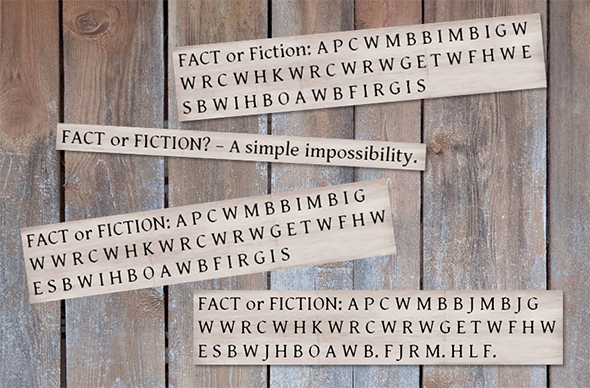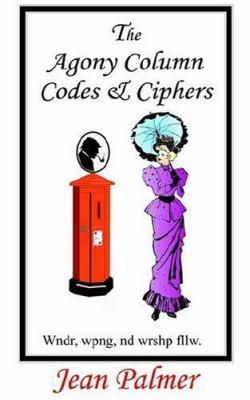Three encrypted newspaper advertisements from 1879 are still unsolved. Can you decipher them?
The book The Agony Column Codes & Ciphers by Jean Palmer (i.e., Tony Gaffney, a reader of this blog) is a treasure trove for everybody interested in old cryptograms.
Tony’s book presents over a thousand encrypted newspaper advertisements from Victorian England. Tony, who is an excellent codebreaker, has long solved most of these cryptograms, but some still wait to be deciphered. On Klausis Krypto Kolumne I have published many an article about these.
Many of the encrypted ads covered in Tony’s book contain love messages. Others were placed by business people in order to send news to partners and customers. Ignatius Pollaky, a private investigator of the Victorian era, communicated via newspaper ads, too. As far as I know, Pollaky’s encrypted messages have never been broken.
Another series of encrypted newspaper advertisements that are still unsolved were published in the Evening Standard in 1879. All of these ads start with the words “FACT or FICTION”. Here they are:
March 25th, 1879
FACT OR FICTION? – T E T S D Y N T R L N S N M D E M Y G M D E E R M E M Y M C N M N Y S L D R Y M T N E.
April 25th, 1879
FACT or FICTION? – A simple impossibility.
June 11th, 1879
FACT or FICTION: A P C W M B B I M B I G W W R C W H K W R C W R W G E T W F H W E S B W I H B O A W B F I R G I S
June 13th, 1879
FACT or FICTION: A P C W M B B J M B J G W W R C W H K W R C W R W G E T W F H W E S B W J H B O A W B. F J R M. H L F.
Analysis
Three of these four advertisements are encrypted, one is in the clear. The fourth message repeats almost half of the third one.
Using CrypTool 2, I created the following frequency analysis of the encrypted parts (omitting the “FACT or FICTION” and the second advertisement):
This frequency distribution doesn’t look exactly like English language (e.g., there is no letter in the English language that has a frequency of over 15 percent). However, considering that we have only little text to analyze and that there are some repetitions, a one-to-one substitution (MASC) still seems possible. Of course, there is no guarantee that we deal with English plaintext – the language might as well be French or German.
As the second advertisement of this series is not encrypted, it might contain the key used to encipher the other three.
If you can find out more about these newspaper advertisements, please let me know.
Follow @KlausSchmeh
Further reading: Who can decipher this Pitman letter from the US Civil War?
Linkedin: https://www.linkedin.com/groups/13501820
Facebook: https://www.facebook.com/groups/763282653806483/








Kommentare (9)